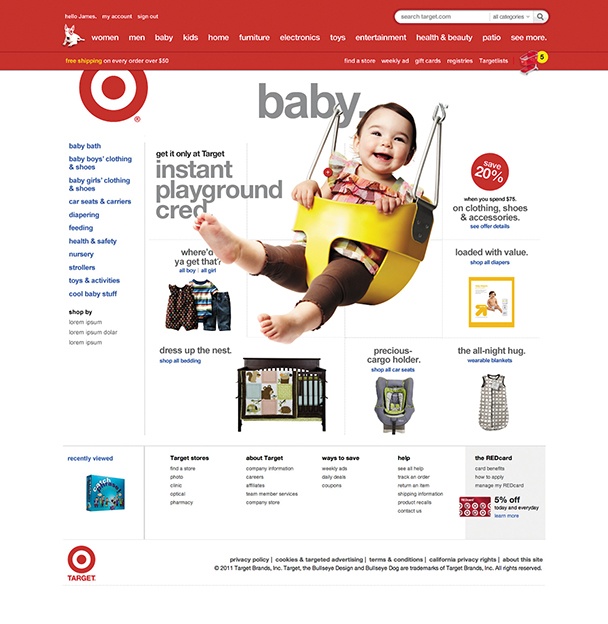Retail Report: Baby Products and E-Commerce
by May 9, 2016 12:00 am 420 views

The Cradle Rocks
For Online Retailers
Popular singer Amy Grant recently announced that she teamed up with Tori Kelly on a remake of her breakthrough hit single, “Baby Baby.”
The song’s release is perhaps auspicious. According to analysts, baby products are one of the hottest online product segments.
The numbers are clear: Consumers spend $6 billion online each year on baby goods and a total of $30 billion on and offline. According to a recent Internet Retailer article, the vast majority (75 percent) of these purchases are on Target.com, Walmart.com and Amazon sites (including Diapers.com).
“Online sales of baby products are out-competing all other segments of consumer packaged goods that we have surveyed over the last three years,” TABS Analytics CEO Kurt Jetta said, according to Internet Retailer. “Brick-and-mortar retailers with e-commerce aspirations should treat baby product sales as the front line of their battle for online success.”
Part of the reason online sales are so strong likely has to do with the purchasing demographic. Millennial parents grew up in a world of e-commerce. Buying things online is second nature. In fact, Amazon created a special discount buying program for parents. Originally called “Amazon Mom” it is now known more inclusively as “Amazon Family.”
Interestingly, the Internet Retailer article notes that 40 percent of people buying baby products aren’t themselves actually parents of babies. Instead, these consumers are friends and relatives who are buying gifts. This creates a potential niche market for suppliers and retailers who may be able to help gift givers select appropriate items for expectant parents and babies.
In any case, it is clear that the baby market is one that offers significant online and offline opportunity.
Online Retailers, Big Data and
Competing with Suppliers
E-commerce sites aren’t just online storefronts. They are also data-gathering tools. Some retailers use this data to undermine their own suppliers’ sales. When this happens, relationships between e-commerce companies and product sellers become strained.
A recent report in Bloomberg details the possible risk that suppliers face when selling products through major retailers. The article described the predicament of Rain Design, producer of laptop stands. The stand has been a top seller for over 10 years now, but recently sales dropped off. The reason? Amazon manufactured a similar product under its Amazon Basics brand and sells it for significantly less than the original.
There is no violation of Rain Design’s patent, so the company has no recourse against Amazon.
Granted, this is the free market at work. If someone can sell a product for less and still make a profit, they will. But there’s another factor to consider: How does access to sales data affect the trust that ought to exist between retailer and supplier when the retailer also sells its own line of products?
As Chad Rubin of Skubana, an e-commerce platform software company, noted in the Bloomberg story: “They’re [referring to Amazon] data scientists. They know what people want, and they’re going to mop it up.”
Simply put, online retailers can use online data to spot a product that may be ripe for competition, particularly if the retailer can easily produce a less expensive version. Suppliers need to be aware of this risk when they seek distribution for their product. If it sells too well, a retail “partner” may become a competitor.
E-Commerce Third-Party
Sales Potentially Confusing
In the early days of the internet, merchants set up e-commerce websites, marketed them and hoped for the best.
As Amazon began to expand and grow its product mix, many consumers became Amazon loyalists. The reason was simple: Amazon offered a one-stop shopping opportunity, growing its assortment through internal expansion and allowing third-party sellers to use the Amazon platform.
Other online retailers, including Sears and Wal-Mart Stores Inc., followed suit and created their own third-party “marketplace” programs.
Now analysts are predicting an e-commerce war between Amazon and Walmart that focuses on these third-party sales.
A recent Business Insider attributed to ChannelAdvisor CEO David Spitz that “Walmart still lags behind Amazon significantly in e-commerce, but it does have the fastest growing marketplace … at 65 percent year-over-year in the fourth quarter of 2015.”
The trend toward third-party marketplaces isn’t without pitfalls. In 2011, Sears suffered a major public relations headache when a third-party seller accidentally listed iPads for $69 each. Sears customers gleefully took advantage of the deal, only to be disappointed when the marketplace retailer said “oops” and promised to credit customer accounts. Outraged bargain-hunters took to social media, and Sears was forced to reckon with bad publicity, even though it wasn’t Sears that made the error.
Another issue facing e-commerce platforms with marketplace programs is that of “arbitrage.”
According to a recent article on the Recode website arbitrage is “the practice of buying a product at one price from one retailer and reselling it on another shopping website for a profit. … It can be disappointing for loyal Amazon customers who trust that Amazon usually has the best price or something close to it.”
The article also notes that Amazon’s terms of service don’t permit this practice, though it will likely take some time for the retailer to identify and chastise offenders.
Meanwhile, the battle for marketplace sellers continues — even as e-commerce giants scramble to keep these sellers in compliance with user agreements.
